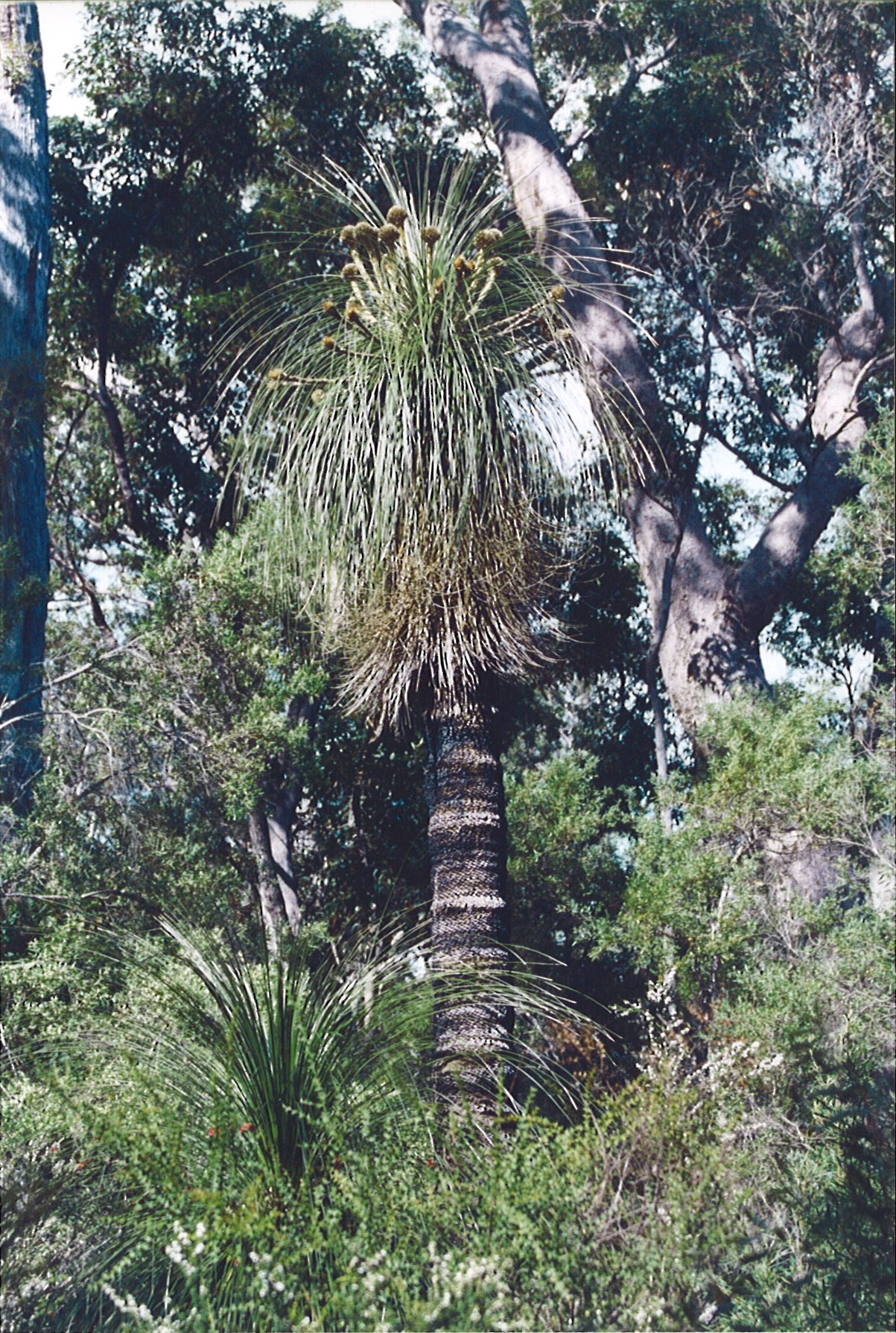- Kingia
Taxobox
name="Kingia"

image_caption = "'Kingia australis" at Fernhook Falls (Western Australia)|] ,Western Australia
regnum =Plant ae
unranked_divisio =Angiosperms
unranked_classis =Monocots
unranked_ordo =Commelinids
ordo = (unplaced)
familia =Dasypogonaceae
genus = "Kingia" | genus_authority = R.Br
species = "K. australis"
binomial = "Kingia australis" | binomial_authority = R.Br"Kingia" is a
genus of the plant familyDasypogonaceae , consisting of a single species "Kingia australis". It has a thick pseudo-trunk consisting of accumulated leaf-bases, with a cluster of long, slender leaves on top. The trunk is usually unbranched, but can branch if the growing tip is damaged. Flowers occur in egg-shaped clusters on the ends of up to 100 long curved stems. "Kingia" grows extremely slowly, the trunk increasing in height by about 1½ centimetres per year. It can live for centuries, however, so can attain a substantial height. 400 year old plants with a height of six metres are not unusual."Kingia australis" is confined to the southern half of
Western Australia . It was first collected atKing George Sound by Robert Brown in1801 . The genus was named in honour ofPhilip Gidley King andPhillip Parker King . The species epithet "australis" isLatin for "southern".When not flowering, "Kingia australis" bear a superficial similarity to species of the genus "
Xanthorrhoea ", some of which bear the common name "blackboy" because of their purported similarity to an Aboriginal boy holding an upright spear. However, the flower stalks of "Kingia australis" are completely different from that of "Xanthorrhoea" species. Because of this, "Kingia australis" was for many years thought to be a female form of the blackboy and was commonly named black gin, "gin" being the Nyoongar word for "woman". This remains the most widely known common name, although in 2007, some consider the name inappropriate or at least belonging to the past. The genus name "Kingia" or the Aboriginal name bullanock are now preferred."Kingia" and "Xanthorrhoea" are biologically quite distinct and are not closely related. For example, "Xanthorrhoea" have a secondary thickening meristem in the trunk (Dracaenoid secondary thickening
meristem ), whereas "Kingia" lack this feature.References
*
*.
Wikimedia Foundation. 2010.
